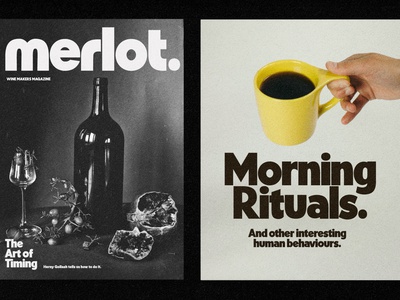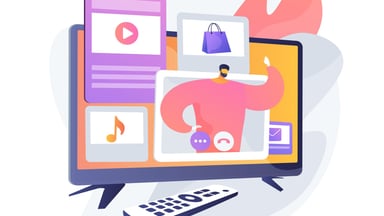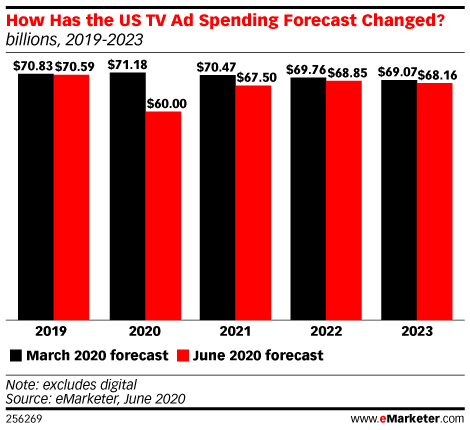
Coca-Cola has used print ads for years to promote its products. Although the company uses digital advertising now, the company's print campaigns remain an integral part of its marketing plan. In its marketing, the company also relies on music and art. Coca-Cola printed ads have a distinctive theme and focus.
Coca-Cola advertisements featured illustrations of women drinking soft drinks in the late 1800s. They were created by Haddon Sundblom, the artist behind Coca-Cola Santas.
Mary Alexander, an African American woman, was the first to appear in Coca-Cola's print ads in the 1950s. She appeared in 15 ads throughout the 1950s. Her ads were created to appeal to both men and women, and encourage repeat purchases. Coca-Cola had never before used a public figure to advertise in this campaign.
The new owner of Pepsi decided to explore other ways to grow the company after the 1988 acquisition by Coca-Cola. One method he used to do this was to send coupons out to customers. Another way was to introduce a promotional item, like Cherry Coke.

These changes brought new expectations for Coca-Cola's marketing. The brand had to now use advertising to promote multiple products. The company was ready to launch Open Happiness.
Coca-Cola provided a template for its print ads that was graphical and helped to get things moving. The ad would be printed around the world.
A new ad format was also introduced by Coca-Cola. The new ad uses a 5-note melody to replace a song that features audio signatures inspired by Coca-Cola. These "Try not to hear this" ads are similar to the company's annual Christmas truck campaign. The new commercial is more of an "feel-good" advertisement.
The new ad features people from all walks of life. It shows a multiracial group holding cokes. It has a range of styles, including a retro and modern design.
For a company that has always emphasized taste, the new Coca-Cola ad has a different vibe. This new Coca-Cola ad focuses on the brand's history, rather than the taste of the beverage.

Coca-Cola's print ads have one goal: To make the drink more appealing to consumers. Apart from the refreshing, invigorating properties of Coca-Cola, the advertisement makes it more attractive by emphasizing the 5c cost.
Synaesthesia is a science term that refers to the merging or blending of the senses. The brain is said be capable of creating wonder when stimulation of one sensory triggers another.
Although the Coca-Cola ad succeeded in creating a positive, new mood, it is not likely to have helped the company improve its financial position. Coca-Cola saw its 2018 revenue drop 10% compared with the previous year. Q4 2018 revenues were also the lowest since 2007. How has Coca-Cola done this?
FAQ
What is an Ad Campaign?
An advertisement campaign is a series containing advertisements to promote a product. This could also include the entire production of these ads.
The term "ad" comes from the Latin word for "to sell." Marcus Terentius Varro, 116-27 BC, was the first to use it. He used it as a verb that meant "to make a sales."
Advertising campaigns are typically done by large agencies and companies. There may be many media types involved, including print and television as well as radio, TV, and internet.
Advertising campaigns can last up to six months and have specific goals. Campaigns can be targeted at increasing awareness or sales, for example.
What do you need to know about print advertising?
Print advertising can be a powerful medium for communicating with customers. Many companies use print advertising to promote their products. The key objective is to capture the attention of the consumer.
Print ads are usually one page in length and can include text, images and logos. They can also include sound and animation as well video and hyperlinks.
Here are the main types and classifications of print advertising:
1. Brochures - Large format printed brochures are used to draw people in to stores. Brochures often feature eye-catching designs and colorful photos.
2. Catalogues: These are smaller versions or brochures. These are typically sent to customers who ask for specific information.
3. Flyers - These are small pieces of paper distributed at events such as concerts and fairs. These flyers are usually free, but they must be purchased if given to retail outlets.
4. Posters - These flyers can be larger than the ones you see on the flyer. They are often displayed on walls, fences, or buildings. They are usually made using computer software programs, which is designed to draw the eye of passersby.
5. Direct mail - These are letters or postcards that are sent directly to potential customers. These are sent out by companies to remind customers about their business.
6. Newspaper Ads - These are placed in newspapers and magazines. They can be quite lengthy and often include text as well as images.
What is branding?
Your brand is your way of communicating who you are as well as what you stand behind. It is how people will remember your name when they hear it.
Branding involves creating an identity that makes your company stand out. A brand is more than just a logo. It includes everything from your physical appearance and the voice of employees.
A strong brand makes customers feel more confident about buying from you. It gives customers confidence when choosing your products over the ones of other competitors.
Apple is a great example of a brand-named company. Apple is a well-known brand for its elegant design, high quality products and excellent customer service.
Apple's brand has become synonymous with technology. Apple is the brand people think of whenever they see a smartphone or computer.
It is a good idea to create a brand prior to starting a new company. This will give your business a face and personality.
What is affiliate marketing?
Affiliate marketing is an online model that allows you to earn commissions for referring customers to other websites. The product owner pays you for each person who buys from you.
Affiliate marketing is based on referrals. Referring people to your website is all that's required. Refer them to the website.
You don't have to sell anything. It's just as easy to sell as it is to buy.
Even affiliate accounts can be set up in just minutes.
You will get more commission if you refer more people.
There are two types:
-
Affiliates who are the owners of their own websites
-
Affiliates working for companies offering products or services.
Is there any way to get free traffic?
Refers to traffic that is free from search engine results. This is also known as organic or natural traffic. You can get traffic free of charge by using article marketing, social media marketing and blogging.
Article Marketing is an excellent way to generate free traffic. Paying for ads is often more expensive than CPC. Content marketing is also known by the term article marketing.
Social Media Marketing - Social media sites like Facebook, Twitter, and LinkedIn allow you to promote your business through advertising. You can use these platforms to post updates, share photos and build relationships with people who may become potential customers. Many businesses decide to purchase advertising space on social media sites to reach a wider audience and at a much lower cost.
Blogging - Blogging is another great way to generate free traffic. If you create quality content that people love to read, visitors will find you. You can start to monetize your blog with the sale of products or services after you have attracted readers.
Email Marketing: Email marketing is a proven method to increase traffic to your website. You can grow your list and eventually sell to subscribers by sending them emails frequently.
Advertising: What does it mean?
Advertising is an art form. Advertising is not about selling products. It's about building emotional connections between brands and people.
Advertising is about telling stories and using images to communicate ideas.
You must communicate clearly and persuasively. It is important to share a story that appeals to your target audience.
Advertising is different than other communication methods, such as writing or public speaking.
When you create a winning ad campaign, it is creating your brand identity.
This is how memorable you can be. People want to remember you.
How can I choose my target audience
Start with yourself and those close to you. You might be unsure where to begin. Ask yourself: "Whom am I trying to reach?"
Ask yourself these questions. Who are the most influential people within my industry? What are the problems they face daily? Who are the smartest people in my industry? Where are they located online?
Go back to the beginning when you started your business. Why did you begin? What problem were you able to solve and how did this happen?
These answers will help you identify who your ideal clients are. They will also reveal their personality and reasons for buying from them.
You can also look at your competitors' websites and social media pages to find clues about whom they cater to.
Once you've identified your target customers, you'll need to decide which channel(s) to use to reach them. An example: If you provide services to realty agents, you may create an informational website for home buyers.
If you provide software to small businesses, you could develop a blog targeting those companies' owners.
A Facebook page could be created for clothing sellers. If you own a restaurant, you can set up a twitter account to provide information for parents searching for child-friendly options.
It is important to remember that there are many methods of getting your message across.
Statistics
- Advertising's projected distribution for 2017 was 40.4% on TV, 33.3% on digital, 9% on newspapers, 6.9% on magazines, 5.8% outdoor, and 4.3% on radio. (en.wikipedia.org)
- Google will display whichever ad type (CPM or CPC) is expected to earn more revenue for the publisher, which is in Google's best interest since they take a 32% share of the revenue. (quicksprout.com)
- It's 100% reliant on your website traffic. (quicksprout.com)
- In 1919 it was 2.5 percent of gross domestic product (GDP) in the US, and it averaged 2.2 percent of GDP between then and at least 2007, though it may have declined dramatically since the Great Recession. (en.wikipedia.org)
External Links
How To
How to make Sponsored Ads on Facebook
Facebook is now one of the most used social networking sites. Globally, there are 1.79 Billion active monthly users. The number is increasing every day.
Facebook is free. But, if you wish to reach your audience directly, you need to pay. Paid advertising options include promoted posts and banners.
Log in to your existing application if you have one. Otherwise, click "Create New App." These are the steps to follow:
-
Click "Add Platform", under the Apps section.
-
Click on "Advertising" and then click Continue.
-
Complete the form, and then submit it.
-
After approval, you'll receive a Client ID (and Secret key). You will need to copy them.
-
Copy the keys and paste them into the fields.
-
Select the currency and enter the name of the campaign.
-
Click "Begin Campaign"
-
Follow the steps until the banner appears. The URL will be copied and you can return to Facebook.
-
Copy the code and paste it into the box provided to you by Facebook.
-
Click "Save Changes."
-
Your ad must now be live
-
For each additional banner that you wish to make, repeat steps 10-12.
-
Once you are done, click "Continue", and continue with the process.
-
Create your final ad group.
-
Once complete, click "View All Ads" to see all of your campaigns.
-
Simply click the "Remove ad" button next each individual ad.
-
If your campaign is not producing results, make sure you have followed the instructions.
-
Be sure to verify the date range of your campaigns.
-
Make sure you set your budget appropriately.
-
Make sure to save your changes.
-
Review the settings for your campaign before clicking "Submit."
-
Wait for your ads to appear on your timeline.
-
Well done!
-
Let's now look at some tips to improve your results.